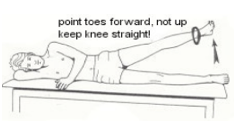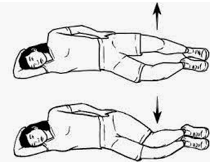Save Your Knees!
December 2017
In the therapy world, we as therapists are often called upon to help individuals whom are suffering from knee problems. Knee injuries, whether acute or chronic, are among the top 2 most common diagnoses that bring people to physical therapy at our location in Flagstaff. Knee injuries commonly affect the ligaments, but even more commonly, will affect the medial and lateral menisci, and the cartilage which covers all the moving parts of the knee.
Essentially, all of us are born with knees that should last a lifetime. However, why is it that we so frequently see our joints wearing out (arthritis), knee ligaments failing, and menisci that are tearing? These failures often relate to deficiencies in the active restraint system of the knee. What is this active restraint system? Essentially, it consists of everything that you can do to control the knee actively; notably control over the muscles and nerves of the region. This often times does not directly mean the muscles and nerves of the knee, but those of the hip, the foot/ankle, and even into the core muscles.
In chronic and acute knee issues alike, training these supportive muscles will help to direct the positioning of the knee, thus increasing safety, and optimizing the performance of the knee. To understand this, let us consider that the knee is not at all a simple hinge joint. It is a complex joint that has 4 separate bones, at least as many ligaments, and moves in multiple directions at once. The femur (thigh bone) and the tibia/fibula (lower leg bones) are incredibly long levers, and exert huge forces on the knee joint.
When looking at your knee, you will notice the general lack of muscles surrounding the knee joint itself. There are some small muscles on the back side of the joint, but really nothing significant. Instead, the knee relies on the rotational muscles that are found around the hip, and the muscles that control the ankle/arch to determine the position of the knee. While not an absolute truth, many of the knee injuries and deficiencies that we witness in the clinic are due in part to weakness in the rotational muscles of hip, and show themselves as a leg that is difficult to balance on.
Few people will ever have problems with overworking their hip muscles, so try some of these exercises to address the hip, and help the knee:

Side Lying Leg Raises

Clamshell Exercise

Reverse Clamshell Exercise
Similarly, the integrity of the arch and ankle muscles can help to support the knee from below. Commonly, the arch becomes less prominent and collapses inward, taking the knee with it. This results in a condition of genu valgum (knock-kneed). This loads the cartilage of the knee unevenly, and wears the joint surfaces prematurely. The opposite can also happen with feet that roll to the outside excessively. This can lead to knee genu varum (bow-legged). In both situations, the knee will likely suffer and it’s alignment be compromised.
The faulty alignment of your joints will lead to premature wearing of the cartilage, or overstressing of the ligaments… just like a bad alignment on your car will lead to poor wear on your tires.
Try these exercises to help with arch/ankle strengthening and alignment, thus helping the knee from below:

This is by no means a comprehensive list of exercises to do for your knees. However, these represent a few simple exercises that can complement a traditional knee program, or that you can add to your current exercise program to help. These exercises are pertinent for the weekend warrior, the young athlete, the retiree… pretty much anyone who wants to preserve their knees. Give the exercises a shot, working until you feel just little bit tired. Try them a few times a week, and watch the exercises get easier! Watch your balance improve, and SAVE THOSE KNEES!